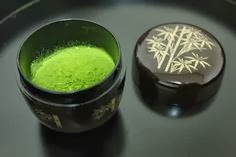Yukata is a simple kimono and it more cheaper than kimono. The Japanese will generally participate in more folk festivals such as Bon-odori Festival and Hanabi and they will wear a Yukata together with geta (Japanese-style sandals). Yukata are worn for both men and women. Men's yukata are distinguished by the shorter sleeve extension of approximately 10cm from the armpit seam, compared to the longer 20cm sleeve extension in women's yukata. Yukata literally means bath(ing) clothes, although their use is not limited to after-bath wear.
 |
| Picture of Men's Yukata |
 |
| Picture of Women's Yukata |
 |
| Picture of Stylish Ornamental hairpins |
 |
| Picture of Obi |
 |
| Picture of Tabi |
 |
| Picture of Geta |
 |
| Picture of Foldable Hand Fans |
 |
| Picture of Kinchaku |
Most of the traditional yukata dyed blue dye made from cotton but now it has become diversified bathrobe color choices. Pattern is generally used in the summer of plants and animals or things. Mostly, the younger people will choose colors bright, vivid colors and more pattern designs.The older people would choose darker, matured colors and simpler designs, this is similar with the kimono. A child may wear a multicolored print and a young woman may wear a floral print, while an older woman would confine herself to a traditional dark blue with geometric patterns. Men in general may wear solid dark colors. For the girls, they will styling their hair using decorative pins to look more beautiful when they wear Yukata. As a Japanese traditional clothing yukata summer, in the mix of colors and fancy, as much as possible reflect the summer cool feeling. Blue, purple and white bottom is the most common with goldfish, fireworks, butterflies and other lovely patterns.
 |
| Picture of The younger people wear Yukata which bright,more vivid and more pattern design. |
Sumo wrestlers would wear in public bathrobe, budding wrestler in any weather, even when the cold weather are relatively thin wearing only a bathrobe. In the summer most wrestlers will wear.
 |
| Picture of wearing a bathrobe in a restaurant. |
.jpg) |
| Picture of wearing a bathrode in Onsen Ryokan. |
The ways to learn how to wear Yukata :
2. Put the Yukata on. Flip the long sleeves back over your arms, so that they won't be in your way.
3. While one hand is holding both sides of the fabric together in front of your body, try to locate the center line of the garment (where the fabrics are sewed together)on the back of your body using the other hand. Fix the garment to the center.
4. Open up the garment and pull it up to the ankle level.
5. Bring the left side of the garment to the front and decide the length and width.
6. Open up the left side while keeping the length and bring the right side to the front. Decide the length. Bottom corner of the right side of the garment should be about 4" from the ground.
7. Keep the right side garment and bring the left side on top of it. Decide the length. The bottom corner of the left side garment should be about 2" from the ground.
8. Use Koshi-Himo and tie the garment around the waist. Make sure to tie tightly to avoid the garment getting loose. Tack the Koshi-Himo in.
9. Find the side pockets, stick both hands, and pull the extra fabric over Koshi-Himo. Make sure to do the front and the back. *This layer around the waist is called Ohashori. Ohashori is supposed to show below the Obi.
10. Fix the shape of Ohashori and tie the second Koshi-Himo right below the bust. This one does not have to be as tight as the first one. Tack the Koshi-Himo ends in.
11. If you are slim build, you may have extra fabric on the side of the upper body. At the side pockets, pull the back fabric to the front and the pull back the front fabric over it to hide the extra fabric. This will make a clean side look.
12. And now you are done! Make sure to Tie an Obi around the waist for the complete Yukata look.
Want to know more information on how to wear Yukata, please go to the following link. (^.^)














.jpg)



